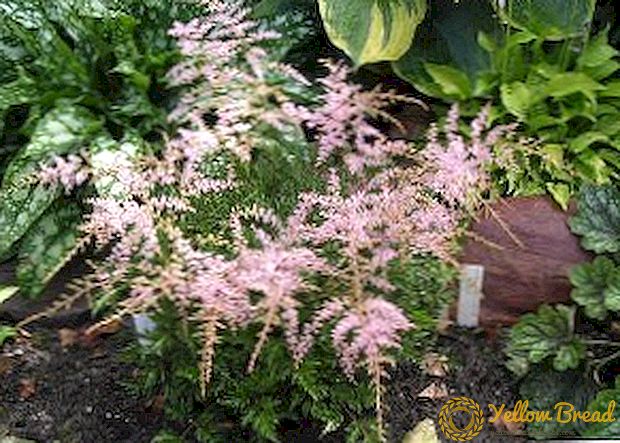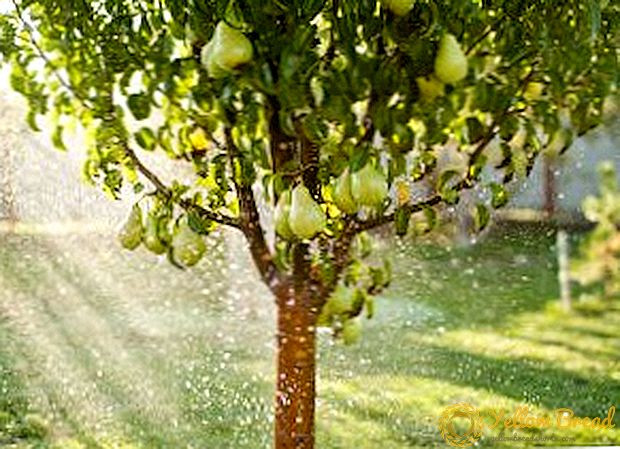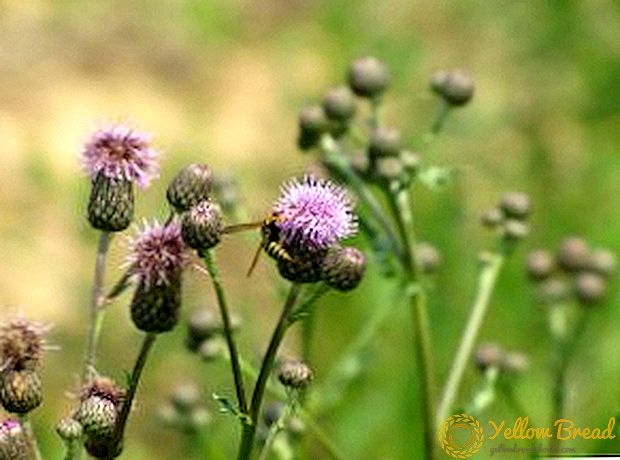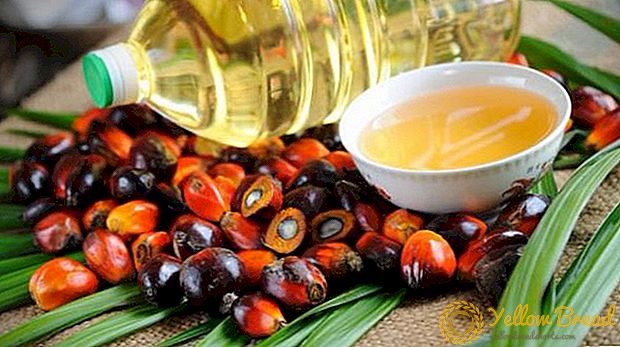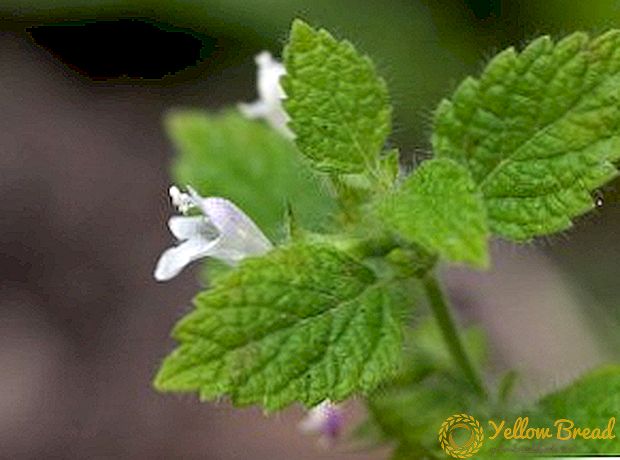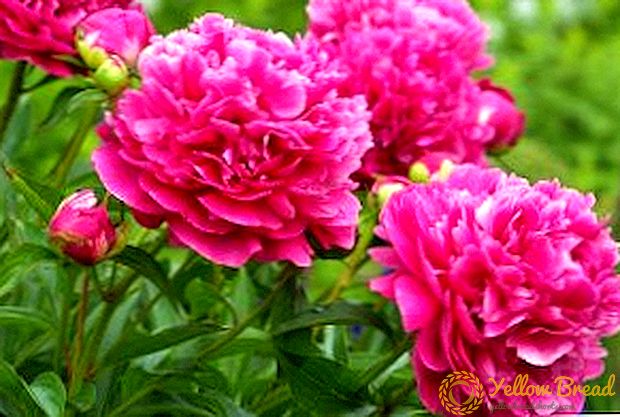 A lot of plants need a good timely feeding, but as for peonies, they will definitely thank you for nutrients brought into the soil with excellent flowering. The main thing is to know what and how much to use, while choosing the most optimal time for fertilizers. It is about these nuances will be discussed further.
A lot of plants need a good timely feeding, but as for peonies, they will definitely thank you for nutrients brought into the soil with excellent flowering. The main thing is to know what and how much to use, while choosing the most optimal time for fertilizers. It is about these nuances will be discussed further.
- Types of dressings
- Foliar
- Root
- Feed calendar
- First
- The second
- Third
- How to feed: options for fertilizers
- Organic
- Mineral
Types of dressings
Especially strongly indicated flowers need nitrogenous compounds, but far from the last place for them are such useful substances as potassium and phosphorus.
In addition, if the lush flowering of your “wards” is really important, then you should stock up on fertilizers based on magnesium, iron, boron, zinc and copper, which are also needed by plants, albeit in smaller doses. All these micronutrients can be supplied in two main ways: root and foliar. 
Foliar
Foliar fertilization is carried out in relation to many plants, but in the case of peonies, it is also obligatory because, thanks to this procedure, it is possible to observe the lush flowering of the plant in the summer season. Young and adult bushes love to take foliar nutritional compositions every month, and gardeners decide for themselves what to feed the flowers.
For example, a plant responds well to watering from a watering can (it is desirable to install a special strainer on the spout) with a solution of ready-made mineral fertilizer (a good example of such formulations is the drug "Ideal"), and to make it stickier to the leaves, a small part of the usual soap or laundry detergent (one large spoon per ten-liter bucket of water is enough). 
The scheme of use of foliar fertilizers is as follows:
Root
On a par with the use of foliar feeding, the root method of fertilizer is often used. As in the previous case, for the entire growing season, nutrient formulations should be used several times: in early spring (already in early March) good peony fertilizer will be mineral mixtures just scattered under the bush. 
Together with the snowmelt waters, they will gradually be absorbed into the soil and very soon they will reach the roots, feeding the whole plant from the inside. With the arrival of the summer gardener, two more such fertilizers are expected, and, as in the first case, dry mixtures are simply scattered under peonies, and then watered well.
Feed calendar
The effectiveness of any feeding in the care of pions depends not only on what kind of composition is used for fertilizer, but also on the time it is applied to the soil or plants. So, some drugs are more appropriate to use in the spring, while others are suitable only for autumn processing, because at different periods of their growth and development the plant needs different micronutrients.
First
For the first pion fertilizer, the foliar method is usually used, immediately after melting snow. At this time, nitrogen-potassium fertilizers will be especially important for flowers in the calculation of 20-30 g of the mixture per bush.
The second
14-21 days after using the first nutrient composition to feed the peony bushes (about one to two weeks before the plant blooms), a second feed can be carried out using liquid nutrients for this purpose.
To 10 liters of real cow dung, you should add 20-25 g of potash fertilizer and twice as much phosphate fertilizer, pouring about 2-3 liters of the prepared mixture under each bush.
Third
Third time nutrient formulations are applied to the soil. after the plant blooms. The following solution is perfectly suitable for the role of a nutrient mixture: 10-15 g of potassium sulfate and about 30 g of superphosphate should fall to a ten-liter bucket of infused manure, and after they are mixed, the ready solution is poured under a bush. The specified amount of fluid will be sufficient for 1 m² of plantings. 
How to feed: options for fertilizers
We found out exactly when it is worth fertilizing peonies, it remains to figure out what you need to water the flowers for their lush and long flowering. First of all, it should be noted that everything is good in moderation, therefore, both in spring and at other times, all the compositions used for feeding should be applied according to the recommendations given and in the correct dosages.
Otherwise, an excessive amount of, for example, nitrogen will lead to the growth of the leaf part at the expense of flowering.
Organic
For active growth and good flowering of pions, fertilizer needs to be taken care of in the fall, providing the soil and rhizome with a sufficient amount of micronutrients. Organic compounds are perfectly suited for these purposes, since they contain the most diverse components necessary for the plant.
Usually for autumn organic dressing use compost, manure or humusby simply laying them on the ground under a bush. Gradually rotting away, all the nutrient components are dosed out of them, which eventually descend closer and closer to the root system of pions. 
In addition, such organic matter also performs another important function: it does not allow the ground to freeze, since the decomposition of manure occurs with the release of heat required by plants in particularly harsh winters.
With the onset of the first steady frosts, the shoots of the plants may freeze over, after which they are cut off flush with the soil (so that the hemp is invisible). After completing this procedure, you can additionally mulch the earth using humus, compost and fallen leaves.

Such an approach to integrated nutrient supply in the autumn will help prepare the peony for lush flowering next year, especially if you back up the positive effect with the right fertilizer in the spring time.
If we are talking about plants that have been on the same place for a long time without transplanting, then you can use ready-made organic fertilizer called "Baikal EM-1", with the presence of live microorganisms in its composition.
The latter have a good effect on the structure of the soil and increase its fertility, but before spring feeding with the indicated preparation, it must be mixed with autumn compost and then used as mulch. The thickness of such a "fertilizer" layer should not exceed 7-10 cm.
No less popular and so-called "folk recipes" create organic compounds. So, your peonies can provide lush flowering with ordinary bread, and all you need is to soak half the loaves in sweet water for the night (two tablespoons of sugar are enough for a glass of water), and in the morning drain the mixture, and pour the peonies from the ground with this solution.
Another simple recipe for organic fertilizer for these plants is based on the use of chicken manure (0.5 liters per 10 liters of water), although it must be insisted well for 14 days. In the future, the finished composition additionally diluted with water in a ratio of 1: 3, and for better efficiency, add a handful of ash to it.
Mineral
Mineral supplements include a wide variety of formulations that are easy to find in specialized stores today.For example, a well-known representative of this group is the drug. Kemiraused three times per season.
With the onset of spring (before flowering), a more suitable composition will be "Kemira-Universal", and it is also used in 7 days after the end of flowering plants. This preparation is quite simple to use: after making a small depression under the bush, a small handful of the specified composition is poured into it and powdered with soil on top.
For the second feeding as well and good Kemira Kombi, and this time you can not dropping it. Just pour the component packaging on the ground under the peonies and pour abundantly on top. This composition dissolves rather quickly, so it will soon arrive at the root system of the plant. 
For foliar fertilizers are also well suited ready-made complex preparations (for example, the above "Ideal"), most of which must first be dissolved in water in accordance with the instructions.
Another useful composition with a whole range of trace elements is the drug "Siliplant", which is able to increase the strength of peony fabrics and optimize its own protective forces of colors. 
Due to the improved immunity of the plant, the likelihood of its disease is reduced and growth is improved, due to which the effect of the drug is often compared with the effect of growth stimulants. To prepare a ready solution for treating bushes, you need to mix 2-3 ml of the preparation with 1 liter of water.
In a word, there are many options for preparations for mineral and organic supplements, but much in this matter depends on the characteristics of the growth of the plant, the climatic region and the personal preferences of the gardener.

